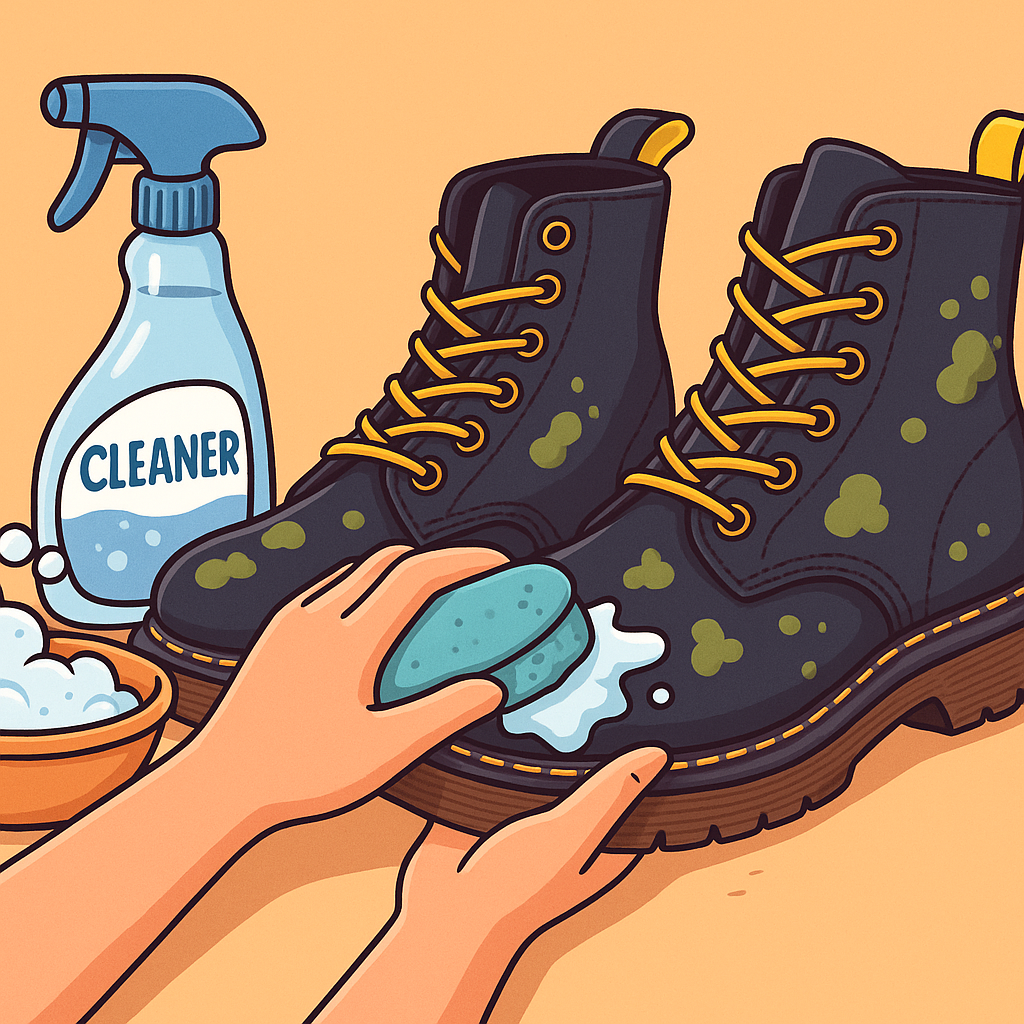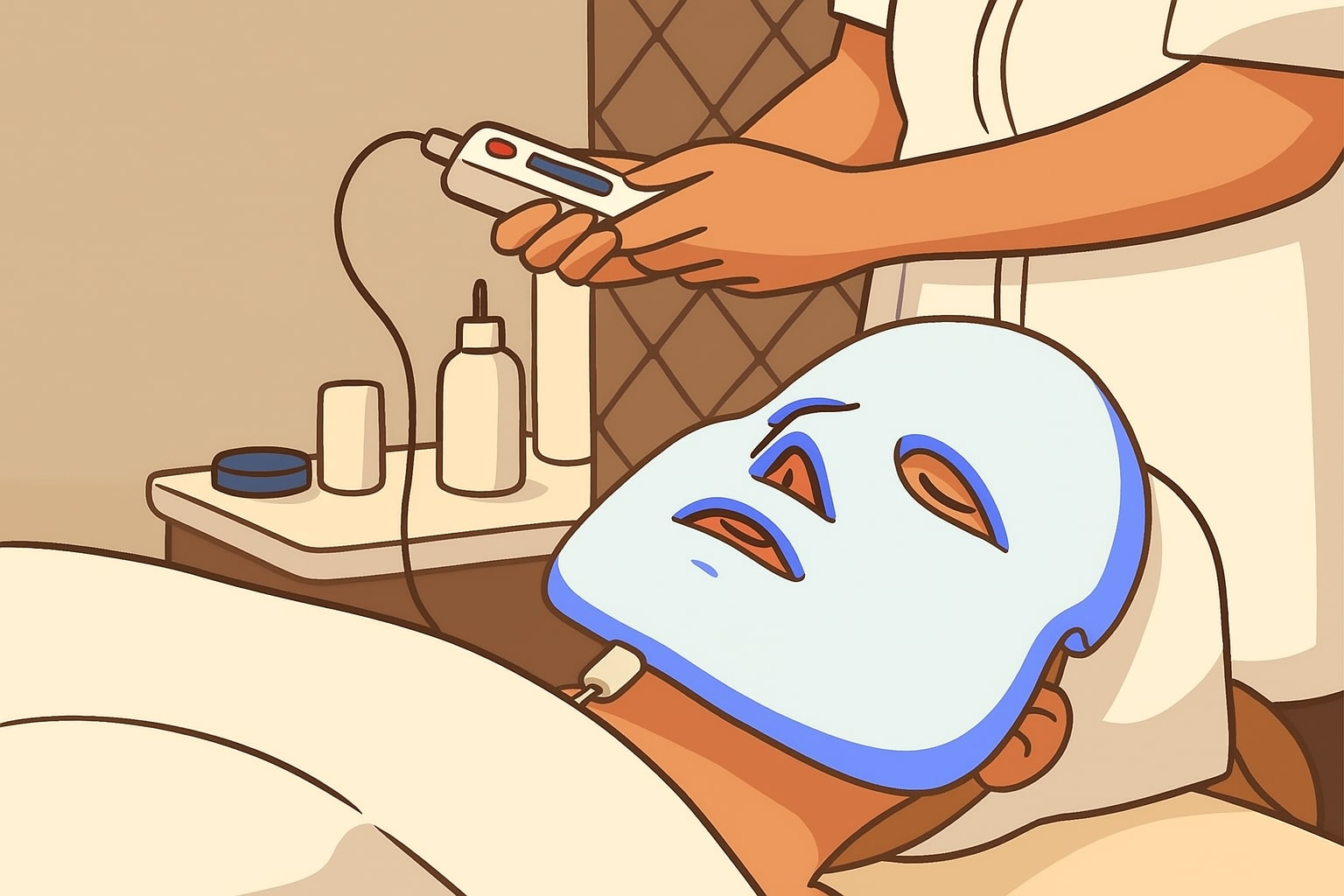Finding mould on your beloved Dr. Martens is nothing short of heartbreaking. These boots are built to last, but exposure to moisture and poor storage conditions can invite unwanted fungal guests.
The good news? You can safely clean mould off your Docs and restore them to their former glory without ruining the leather. In this step-by-step guide, we’ll walk you through exactly how to remove mould, care for your boots afterward, and keep them protected for the long haul.
What Causes Mould to Grow on Dr. Martens?
Mould is a type of fungus that thrives in damp, humid environments. When your Dr. Martens are stored in closets, basements, or containers with poor ventilation, they become the perfect breeding ground for spores. Moisture trapped from rain, sweat, or improper drying can speed up this process.
Leather, suede, and even fabric linings can all be affected. If left untreated, mould can stain the surface, degrade the material, and create unpleasant odors that are hard to remove.
Is It Safe to Wear Mouldy Dr. Martens?
The short answer is no—not until they’re cleaned. Wearing mouldy shoes can lead to skin irritation, allergic reactions, or even respiratory problems. Plus, mould spores can spread to other shoes and clothing nearby.
It’s not worth the health risk or damage to your footwear collection. Always clean and disinfect thoroughly before slipping them back on.
How to Clean Mould Off Dr. Martens: Step-by-Step
Step 1: Gather the Right Materials
Before you begin, here’s what you’ll need:
- Soft brush (like a toothbrush or suede brush)
- White vinegar or isopropyl alcohol (70%)
- Clean microfiber cloths
- Mild soap or leather cleaner
- Warm water
- Leather conditioner or suede protector
- Optional: baking soda or anti-fungal spray
Safety tip: Wear gloves and a mask to avoid breathing in spores.
Step 2: Remove Surface Mold
Take your boots outside to prevent spores from spreading indoors. Using a soft brush or dry cloth, gently remove as much surface mould as possible.
Avoid using water at this stage—you don’t want to activate or spread the spores further. Shake off debris and dispose of the cloth or sanitize the brush after use.
Step 3: Clean With Vinegar or Alcohol Solution
Mix equal parts white vinegar or rubbing alcohol with water. Dip a clean cloth into the solution, wring it out, and gently wipe down the mouldy areas. Focus on seams, soles, and linings.
Don’t oversaturate the material—use just enough to moisten the surface and kill the mould. Let the boots sit for 10-15 minutes before wiping them dry with a fresh cloth.
Step 4: Wash the Interior (If Needed)
If the inside of your Docs smells musty or shows signs of mould, mix a few drops of mild soap with warm water. Dampen a cloth and gently scrub the interior lining.
Avoid soaking the inside, and pat it dry immediately with a towel. For stubborn odours, lightly sprinkle baking soda inside and leave it overnight before vacuuming it out.
Step 5: Dry Properly
Place your boots in a shaded, well-ventilated area to air dry. Never use a hair dryer, heater, or direct sunlight, as this can dry out and crack the leather.
Stuff the boots with paper towels or cedar shoe trees to help absorb moisture and retain shape. Allow them to dry fully before applying any conditioning products.
Step 6: Condition the Leather
Once your Docs are dry, apply a leather conditioner using a soft cloth. This restores lost moisture and keeps the leather supple.
For suede Dr. Martens, use a suede protector spray instead. Conditioning helps prevent the leather from drying out and adds a layer of protection against future mould.
How to Clean Mould Off Suede Dr. Martens
Suede requires special care. Here’s how to treat it:
- Use a suede brush to gently lift and remove dried mould.
- Apply vinegar or alcohol solution using a minimal-moisture cloth.
- Dab, don’t rub, to avoid damaging the suede texture.
- Let them dry fully and finish with a suede protector spray.
Suede is more delicate, so never use soap or harsh chemicals. Patience and gentle touch go a long way.
Preventing Mould on Dr. Martens in the Future
Mould prevention is all about moisture control and airflow. Here are some tips to protect your Docs year-round:
- Store in a cool, dry place with air circulation
- Avoid plastic bags or sealed containers
- Use silica gel packets or cedar shoe inserts
- Wipe down boots after rain or heavy use
- Condition leather every few months
Taking a few minutes after each wear can save you hours of restoration work later.
When Should You Seek Professional Help?
If you’ve cleaned your boots and the mould keeps coming back, or if the leather shows signs of cracking and deep staining, it might be time to call a professional.
Leather experts and cobblers have specialized tools and treatments that can restore heavily damaged pairs. Vintage or collectible Docs especially deserve extra care.
Conclusion
Cleaning mould off Dr. Martens might seem daunting, but it’s entirely doable with the right approach. By following the steps above, you’ll not only get rid of the mould but also restore your boots to their best condition.
Remember: prevention is key. Keep your Docs dry, conditioned, and stored properly, and they’ll serve you for years to come—mould-free and looking sharp.
FAQs
Can I use bleach to clean mould off Dr. Martens?
No. Bleach is too harsh and can permanently damage leather and stitching. Stick with vinegar or isopropyl alcohol.
What if the smell of mould doesn’t go away?
Use baking soda inside the boots overnight or try an anti-fungal shoe spray. Ensure your boots are fully dry.
Will cleaning mould ruin the finish of my Docs?
Not if done correctly. Avoid over-wetting the leather and always condition afterward to restore oils and flexibility.
Is vinegar or alcohol better for cleaning mould?
Both are effective. Alcohol dries faster with less smell, while vinegar is more natural and better for sensitive skin.
Can I wear my Docs right after cleaning?
Only after they’re completely dry and conditioned. Wet leather is vulnerable to damage and further mould growth.









